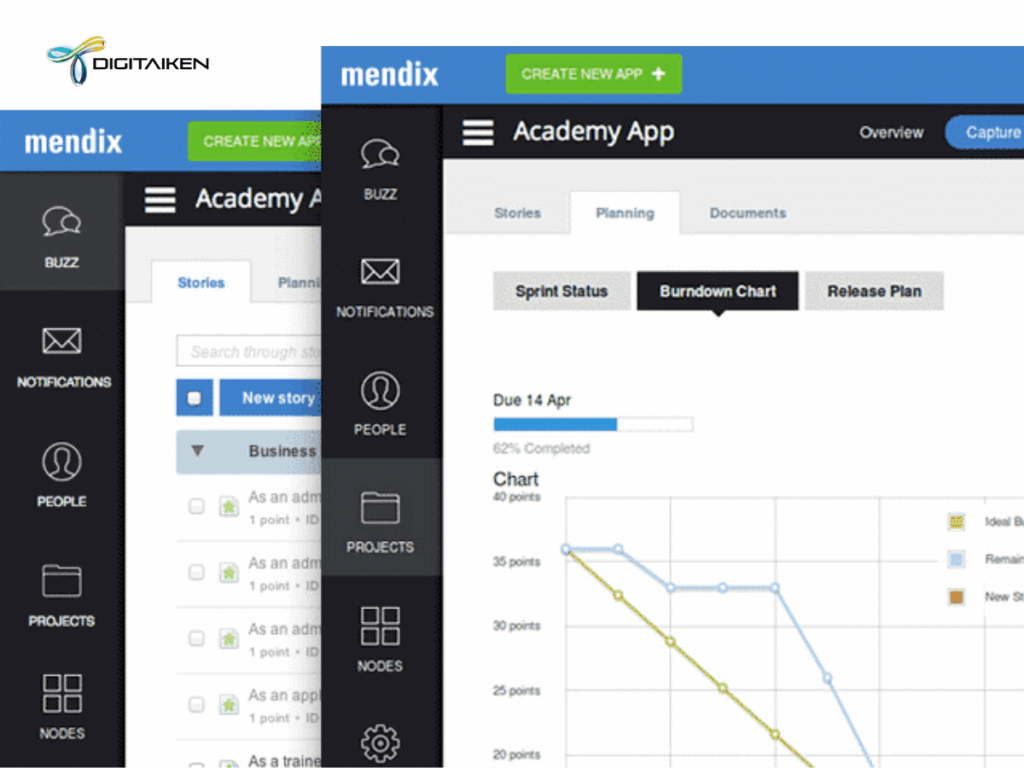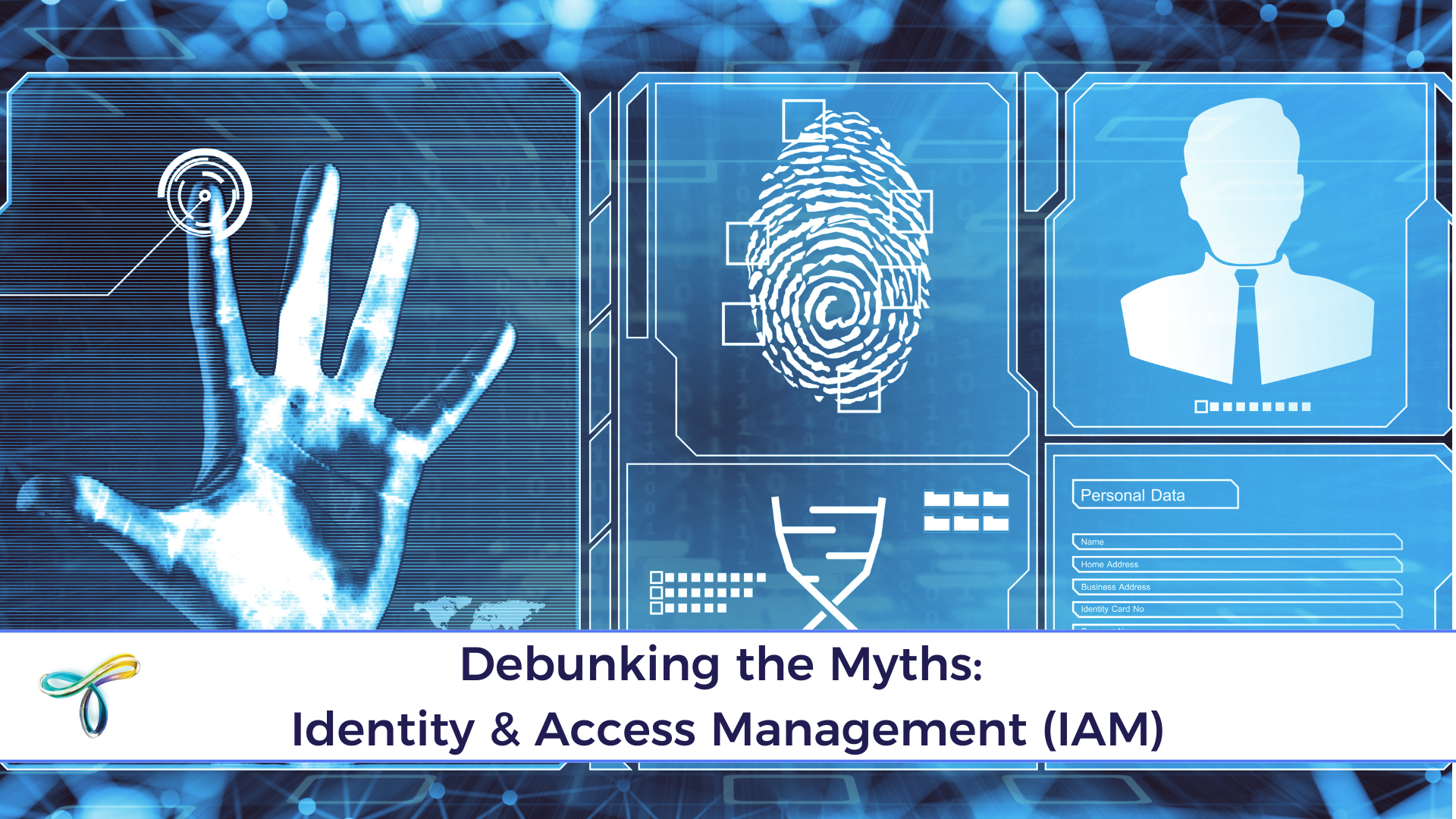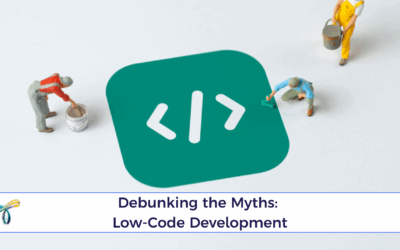Not all code is created equal. And that’s a good thing.
In today’s digital world, building software isn’t a one-size-fits-all operation. Some projects demand the power and precision of traditional high-code development. Others need the speed and flexibility of low-code platforms.
The best part? You don’t have to pick a side. You just have to pick what works for your business.
At DigiTaiken, we help companies do both, whether it’s shipping a fast MVP or engineering a complex enterprise system. And thanks to platforms like Mendix, blending low-code speed with high-code power has never been easier.
Let’s Break It Down: What’s the Difference?
Here’s a quick look at how low-code and high-code stack up:
| Low-Code | High-Code | |
| Speed | Build apps in weeks (or days!) | Longer development cycles |
| Flexibility | Great for workflows, CRUD apps, MVPs | Perfect for deeply custom logic & UX |
| Customisation | Limited without extensions | Fully custom from the ground up |
| Who Builds It | Citizen devs, business teams, IT | Professional developers only |
| Maintenance | Easier, with visual interfaces | Requires dev team for updates |
| Cost | Lower upfront and faster to ROI | Higher investment, longer runway |
When to Go Low-Code
Low-code is ideal when you need to move fast and solve real problems—without waiting months or draining your dev team.
✨ Great For:
- MVPs and prototypes
- Internal workflow tools
- Customer portals
- Mobile apps
- Rapid automation and digitisation

Platforms like Mendix allow teams to design, test, and deploy with visual tools, pre-built components, and built-in collaboration. But don’t be fooled—low-code doesn’t mean low-impact. With the right strategy, you can go from idea to production in record time.
💡Why we love Mendix: It gives us the best of both worlds. Business users can get involved, and developers can extend the platform with high-code when needed. That’s power + speed, working together.
When You Still Need High-Code
Sometimes, low-code just isn’t enough. And that’s okay! For products that are highly unique, performance-sensitive, or built for millions of user, high-code development gives you ultimate control.
✨ Best For:
- Large-scale SaaS platforms
- Advanced backend logic
- Custom UI/UX experiences
- Complex integrations or data structures
- Applications with long-term product roadmaps
In these cases, our dev teams roll up their sleeves and build with full-stack frameworks, crafting every interaction and line of logic from scratch.
But here’s the secret: we often start with low-code to test the waters and validate ideas, then shift to high-code as the solution matures.
Blended Approach: Why It’s Not a Binary Choice
Here’s where things get exciting: the real magic happens when you mix both.
🛠️ Example Use Case:
You build a customer self-service portal using Mendix (low-code development), but plug in a high-code pricing engine built by your dev team. Now you’ve got agility and precision—without compromise.
🎯 Why this matters:
- You can test faster
- Iterate on what works
- Customise only where it counts
- Reduce development overhead
- Empower more of your team to contribute
Case Study Snapshot: From MVP to Scalable Platform
A regional logistics firm came to us with an idea: digitise their paper-based delivery management process. We started with a low-code MVP in 6 weeks.
After validation and feedback, we extended the system with high-code modules for:
✅ Route optimization
✅ Custom notifications
✅ Advanced analytics

Result?
- Full system go-live in under 6 months
- 75% faster delivery updates
- 2x reduction in manual entry errors
The DigiTaiken Take
You don’t need to pick a side—you need a strategy. We use low-code where it accelerates, high-code where it empowers, and Mendix when we want both in perfect sync.
Because at the end of the day, it’s not about code—it’s about creating solutions that work.
📩 Ready to build faster, smarter, and with less friction?
Let’s talk about what the right code can do for your business.





